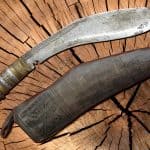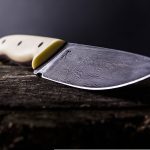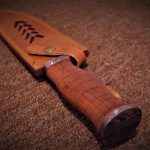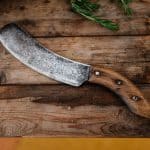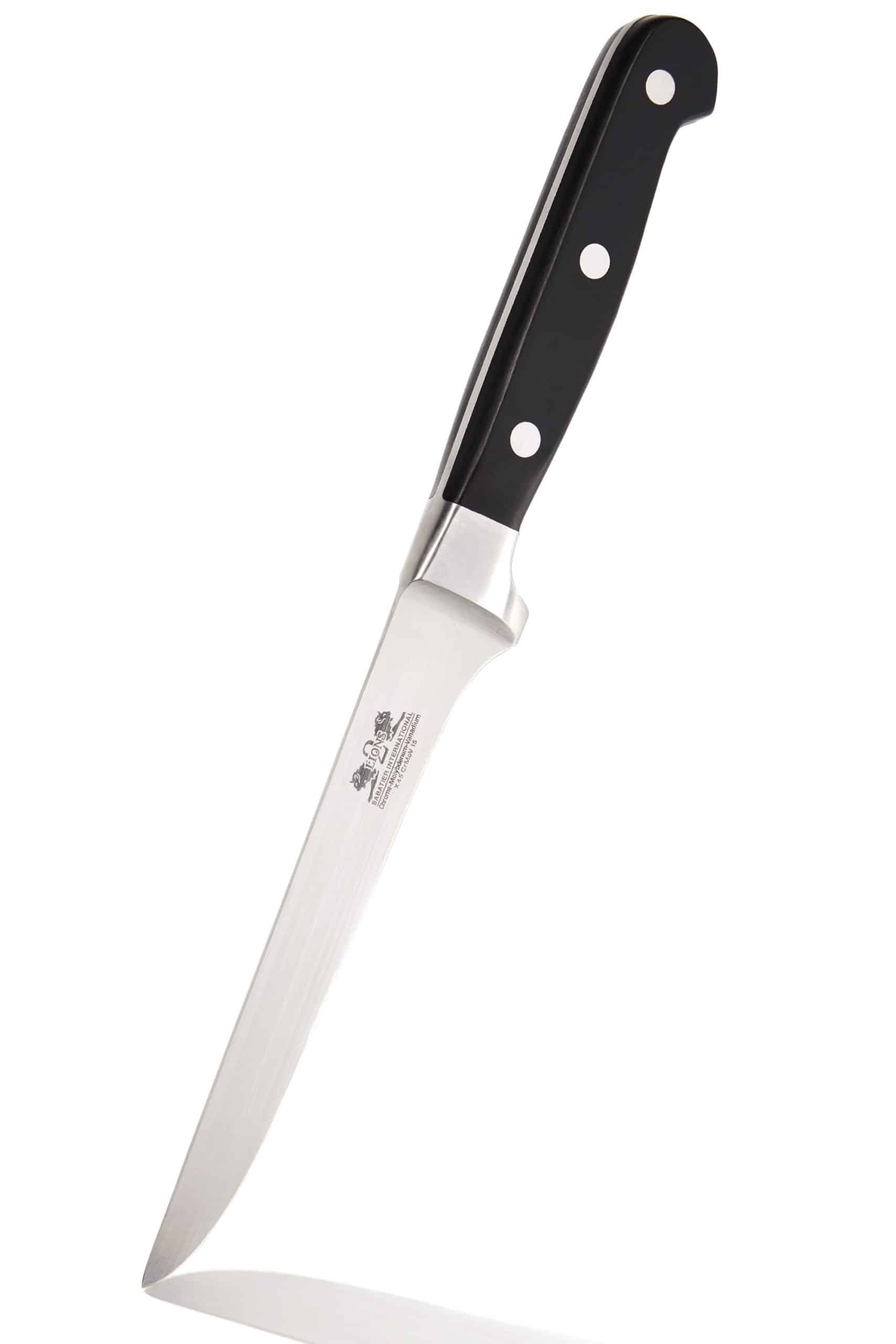
Introduction
Sharpening stones, sometimes referred to as whetstones or honing stones, are used to sharpen tools and other blades. Stones can be used with either oil or water to make the sharpening process more effective. The type of liquid used will largely depend on the specific stone being sharpened, the desired result and personal preference.
Oil or water can both be effective for sharpening blades when used along with sharpening stones. However, these two liquids have different properties and thus provide different results. Oil is generally thought to produce a much smoother edge than water because it will fill up microscopic pores in the stone more effectively, creating a finer edge that lasts longer. Additionally, oil has superior lubricating power as it provides a slick film between the blade and stone which prevents excessive grinding of the blade’s edge when pressure is applied in sharpening. Water, meanwhile, rinses away abrasive particles on the stones which makes it he great option for cleaning off caked-on material and restoring pre-existing surfaces on a stone like harder oils can’t do. In addition to this level of cleaning capability; water also cools down particles during the grinding process allowing them to remain intact longer before they break away from the blade as debris.
It is important to test out what works best for you when you begin using a particular sharpening stone. Sharpening stones can have an array of different characteristics depending on their composition and manufacturer so what works best for one person may not work well for another person with different conditions or preferences.
Types of Sharpening Oil
Sharpening stone oil is used to keep your sharpening stones clean and help you achieve a finely honed edge. It helps remove debris, while also providing lubrication and protection for the stones. There are two main types of stone oil – water-soluble and petroleum-based – each with additional grades depending on the purity.
Water-soluble oils are primarily used on waterstones as they are non toxic and safe to use with food will make a nice slurry when mixed with water; this slurry contains abrasive particles which help reduce wear on the stone. These types of oils come in various grades, from the economical kitchen grade, suitable for household use, going up to professional grade which is 99.9% pure mineral oil that provides optimal protection.
Petroleum-based oils such as mineral oil or wax are typically used on diamond stones or synthetic Japanese style stones due to their slower absorption rate compared to water-soluble oil. They provide superior corrosion protection because of their wax-like coating and offers superior lubrication over time resulting in smoother cuts being achieved more quickly than using other types of oil. Many types come in varying degrees of pureness ranging from very low quality product brewed from common petroleum distillates to professionally formulated products specifically designed for knife sharpening such as Shapton HP Oil and Clarion Luxury Cutting Oils, providing better performance and longer lasting results at a higher price point.
Pros and Cons of Sharpening Oil
Pros of Sharpening Stone Oil:
• The oil helps to soften and protect the sharpening stone surface so it will keep its abrasive textures longer.
• It prevents the blade from heating up during sharpening, allowing you to get a better edge without damaging the steel.
• It’s easy to use and can extend the life of your sharpening stone by reducing wear from frequent use.
• Many oils also possess an anti-corrosive property that protects the blades from rusting or corroding due to contact with moisture or other elements.
Cons of Sharpening Stone Oil:
•Cost—sharpening oils cost more than water, although not significantly so.
• Mess—oils can make a mess when used repeatedly, especially if accidentally spilled on ordinary surfaces. Also, excess oil can stay on the blade, which can create a hazard or impede performance in certain applications.
• Evolutionary Disadvantage—oil is designed for water stones but some carbon steels prefer to be sharpened using water only, due to issues of oxidation caused by oil
Types of Water
When considering sharpening a blade, there are two main types of water that you can use: distilled and tap. Distilled water offers no mineral content, while tap water contains certain minerals that may bond with the blade’s material during the sharpening process. Depending on your knife and its material composition, each type of water will give different results when used in lieu of oil.
For example, when using a carbon steel knife with a hard steel alloy like AUS-10 or VG-10 that is not clad in stainless alloy, distilled water should be used. This is due to the fact that it won’t contain any abrasive particles. However, for stainless steels such as 7CR17MOV or AUS-8A, tap water can be used since it contains some minerals and lubricants which will help protect the steel from corrosion and make sharpening easier. You should also consider any coatings or cladding on the blade and whether they will be affected by either type of water.
Finally, when compared to oil, both types of water require more effort to rinse off and leave behind deposits if not dried properly after usage — something to keep in mind if you choose to use one over the other.
Pros and Cons of Water
Pros of using water:
• Water is a more environmentally friendly option since it doesn’t contain additional chemical components that may accumulate over time.
• Water is generally safe to use on high-carbon blades as well as other blade types, allowing users to sharpen without fear of damaging their blade.
• Unlike oil, water forms a protective layer over the blade while sharpening, ensuring that no residue is left behind.
Cons of using water:
• Because wet stones are slightly softer than oil stones, they will wear down faster when used regularly.
• Mastering the technique for achieving effective results with a wet stone can be difficult because the abrasive action needs to be handled with more finesse than when using an oil stone.
• Working with a wet stone also usually takes up more time than working with an oil stone.
Safety Concerns
When it comes to sharpening stones, there are safety concerns with both oil and water. When using a sharpening stone with oil, you must take into consideration the release of potentially harmful fumes from heating the oil. If you are in an enclosed space or not wearing proper protective gear when working with oil, you may be exposed to dangerous chemicals while sharpening your knives. Additionally, you need to ensure that the used oil is disposed of safely to avoid any potential contamination of food.
With a sharpening stone and water, the main safety concern is that using excess water could cause rust or corrosion of your knives. Rust can make your blades brittle and prone to snapping. This can pose a risk for lacerations during use. In addition, it would be wise to clean your sharpening stone after each use with soapy water as this can remove debris that may damage or erode your knife blanks over time.
Recommendations
When using a sharpening stone, the general recommendation is to use water for all coarser and medium grits, whereas oil is often preferred for honing and polishing with very fine grit stones.
The two main reasons for the difference in recommendations are that firstly, water cools the honing process which can be especially important when sharpening hard carbide or ceramic cutters and blades. Secondly, the lubrication that oil provides can reduce glazing and clogging on very fine hone stones which will increase the sharpening efficiency of these products.
Given these considerations, it is best to use water when sharpening with Coarse, Medium, or Soft Arkansas stones as well as Hard or Soft Arkansas stones. While oil may be used with these stones as well, water will provide a cooler honing experience and be slightly easier to manage throughout the process. For Hard black Arkansas or natural hone stones elect to use an edible mineral oil such as sunflower oil or flaxseed oil in order to avoid potentially toxic solutions.
For polishing and honing with very fine grits such as 6K-10K small particle size diamond stones and Nova 1000-8000+ synthetic faux stones it is recommended to use an appropriate honing oil such as DMT DiamondLap (or similar) to ensure maximum performance of these products.
Conclusion
In general, when sharpening a blade with a stone it is recommended to use either oil or water as a lubricant. Using oil will typically produce finer results due to its ability to suspend smaller particles of swarf generated during the sharpening process. However, using water has the advantage of being less messy than using oil and is generally easier to clean up. Both methods can be effective in achieving a quality edge on your blade and you should experiment with both to find what works best for your tools or knives. It’s also important to note that some stones are better suited for use with water while others are made specifically for use with oil. Ultimately, the choice between sharpening stones oil vs water should be based on the type of stone being used, the convenience of the user, and personal preference. No matter which method you use, it’s important to clean the stone after each use in order to ensure a long lasting and efficient cutting edge!








